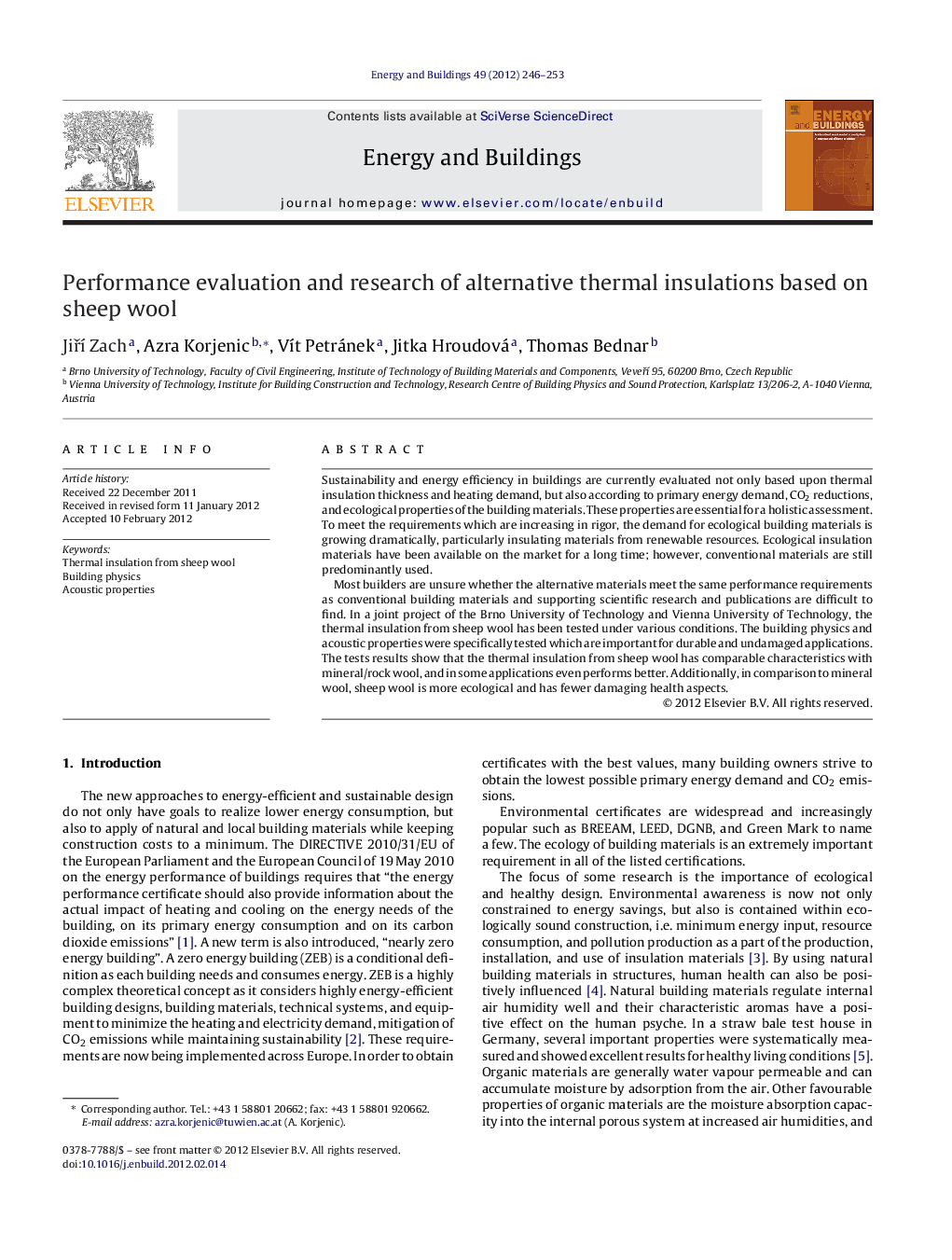| کد مقاله | کد نشریه | سال انتشار | مقاله انگلیسی | نسخه تمام متن |
|---|---|---|---|---|
| 263927 | 504086 | 2012 | 8 صفحه PDF | دانلود رایگان |

Sustainability and energy efficiency in buildings are currently evaluated not only based upon thermal insulation thickness and heating demand, but also according to primary energy demand, CO2 reductions, and ecological properties of the building materials. These properties are essential for a holistic assessment. To meet the requirements which are increasing in rigor, the demand for ecological building materials is growing dramatically, particularly insulating materials from renewable resources. Ecological insulation materials have been available on the market for a long time; however, conventional materials are still predominantly used.Most builders are unsure whether the alternative materials meet the same performance requirements as conventional building materials and supporting scientific research and publications are difficult to find. In a joint project of the Brno University of Technology and Vienna University of Technology, the thermal insulation from sheep wool has been tested under various conditions. The building physics and acoustic properties were specifically tested which are important for durable and undamaged applications. The tests results show that the thermal insulation from sheep wool has comparable characteristics with mineral/rock wool, and in some applications even performs better. Additionally, in comparison to mineral wool, sheep wool is more ecological and has fewer damaging health aspects.
► The demand for ecological building materials is growing dramatically.
► Supporting scientific research and publications of alternative materials are difficult to find.
► The thermal insulation from sheep wool has been tested under various conditions.
► The building physics and acoustic properties for durable and undamaged applications were specifically tested.
► Thermal insulation from sheep wool has comparable characteristics with conventional materials.
Journal: Energy and Buildings - Volume 49, June 2012, Pages 246–253